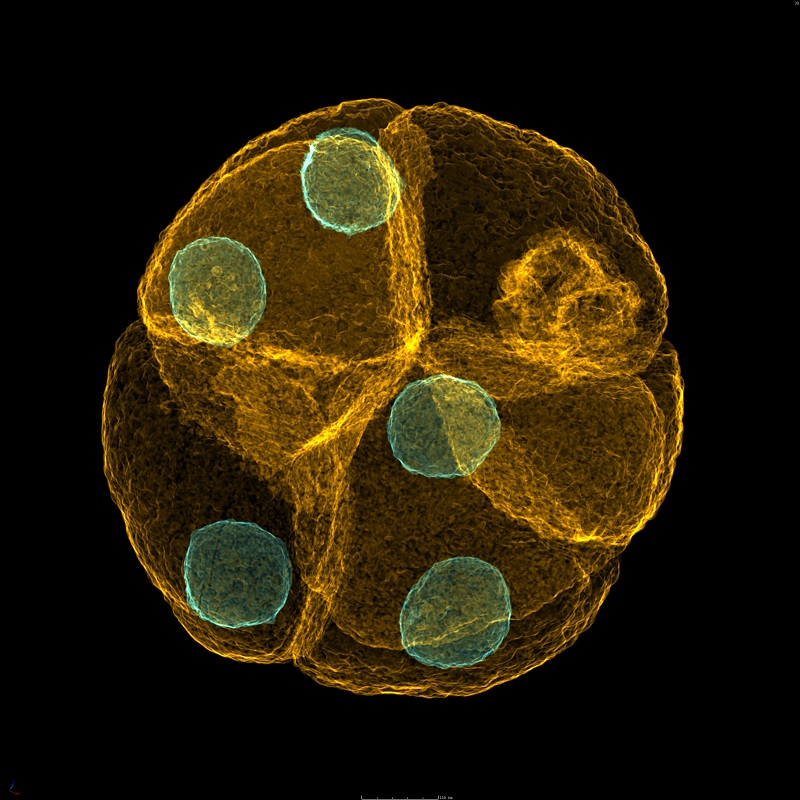Our hope is that this momentum can be carried through to inspire real breakthroughs in deciphering the origin and rise of biological complexity through time.

In September 2019, the Royal Society meeting The origin and rise of complex life: integrating models, geochemical and palaeontological data brought together scientists from multiple disciplines to discuss the creation of testable hypotheses to study this topic.
Today Interface Focus published a new issue based on papers that emerged from that meeting. We spoke with one of the organisers, Professor Rachel Wood from the University of Edinburgh, on the challenges and future directions for the field.
1. How do you define the origin and rise of complex life?
Complex life can mean many things, but here we are concerned with the origin and diversification of eukaryotes, as well as the origin of major clades and grades that have had a formative impact on the evolution of the modern biosphere. This includes the rise of eukaryotic algae, which have a complex polyphyletic origin and a surprisingly late rise to ecological prominence in the Cryogenian Period, approximately 650 million years ago. However, it is the origin and diversification of animals that continues to engender most interest. This is doubtless a consequence of our own animal origins, and because the compositions of our genomes and the nature of our embryology, are intimately related to the events that occurred at the origin of animals and in their subsequent diversification. Animals have co-evolved with the planet, both shaped by environmental and physical constraints as well as shaping the nature of their environment and the biogeochemical processes that operate within it.
2. What is the aim of this Interface Focus issue?
Understanding of the triggers and timing of the rise of complex life approximately 2100 to 520 million years ago has expanded dramatically in recent years. This volume brings together diverse and novel geochemical and palaeontological data presented as part of the Royal Society’s The origin and rise of complex life: integrating models, geochemical and palaeontological data discussion meeting held in September 2019. The individual manuscripts offer prescient insights from multiple disciplines. They contribute towards the goal of the meeting; to create testable hypotheses for the differing roles of changing climate, oceanic redox, nutrient availability, and ecosystem feedbacks across this profound, but enigmatic, transitional period. Why complex life appeared when it did remains unresolved, and encapsulates a multitude of scientific questions from diverse disciplines. These papers do much to advance our knowledge of the origin and rise of morphological complexity in eukaryotes, metazoans, bilaterians, and entire ecosystems.
3. What are the main challenges of this research area?
One of the challenges to obtaining a holistic understanding of the major evolutionary transitions concerns the insufficiently specific nature of many hypotheses, which results in them being much more difficult to test than to formulate.
This is a comparatively high bar for most contemporary hypotheses that seek to explain the origin or diversification of major clades. For example, attempts to explain the origin and diversification of animals have invoked diverse causal mechanisms: the emergence of new gene families; the evolution of coding or non-coding gene regulation; the origin of new life history stages; escalatory ecological interactions; salinity; trace metal nutrient availability; global cooling into snowball Earth; the challenges of increasing oxygenation of the biosphere or its effects in releasing constraints on body size; vicariance biogeography driven by continental fragmentation; release from the ecological and physiological constraints of global glaciation; polar wander; and the mutational effects of pulses of cosmic radiation that result from our galaxy passing through nebulae. These hypotheses are not (all) mutually exclusive. Some may be rejected because they are untestable and, therefore, unscientific. Otherwise, most of these causal hypotheses may have contributed to the shaping of animal diversity and, doubtless, some are at least in part a consequence of animal evolution, while others are likely to be entirely irrelevant to the question at hand. How can we even begin to discriminate among them?
4. What do you think the future directions are for investigating the origin and rise of complex life?
To effectively test hypotheses regarding the interplay between organisms and their environments across key evolutionary events, three general ambitions need to be realised. Firstly, improve underlying data and embrace all the uncertainties inherent in their interpretation; secondly integrate disparate datasets more effectively; and finally improve models to incarnate and test causal hypotheses against the collated data. Many research groups are attempting to do these things.
These challenges require a concerted and co-ordinated international effort to overcome, but they are not insurmountable. As the studies in this volume attest, our knowledge of the origin and rise of complex life is being iteratively accumulated at a phenomenal rate. The suggestions above, which stem from our discussions with colleagues both at the September 2019 meeting and elsewhere over the past few years, seek to encourage a step-change in approach to tackling these interdisciplinary questions, promoting a truly international collaborative ethos, intelligent integration of disparate datasets, and a commitment to the scientific process of developing, and robustly interrogating, testable hypotheses. Our Royal Society meeting was successful in galvanizing discussion between disciplines on the fundamental outstanding questions in our field. Our hope is that this momentum can be carried through to inspire real breakthroughs in deciphering the origin and rise of biological complexity through time.
Keep up to date with the latest issues of Interface Focus by signing up for article alerts, and browse previous theme issues on the journal website.
Photo credit: Zongjun Yin



